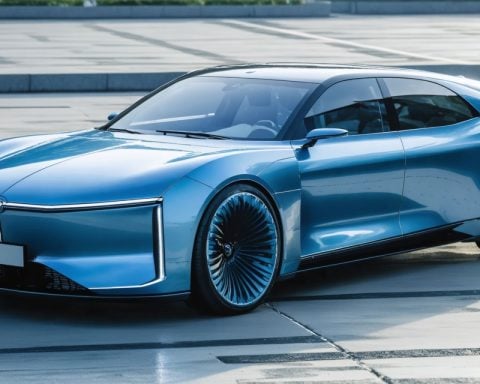- China’s electric vehicle (EV) landscape has transformed over the past decade with over 20 million EVs and 3 million charging stations due to government subsidies and tax incentives.
- Electric cars have become an integral part of both urban and rural areas, with models suiting diverse consumer needs.
- Challenges are surfacing as the EV surge enters its second decade, particularly with costly battery replacements and warranty issues.
- Frustrations among EV owners are rising due to aging batteries, expensive repairs, and inconsistent warranty coverage.
- Some owners resort to third-party services for affordable battery repairs, though this can compromise oversight and accountability.
- Efficient recycling of old batteries and sustainable battery-swapping models are crucial for maintaining EV growth momentum.
- The scalability of recycling and battery-swapping solutions will determine the future sustainability of the EV market.
A crisp winter morning paints a picture of anticipation and waiting across China. Electric cars queue silently, tethered to charging stations like mechanical steeds, their dashboards glowing softly as they recharge. Some drivers remain warm and cozy inside their cabins, scrolling on their phones, while others stand shivering, eyes glued to countdown clocks ticking impatiently.
This scene repeats from the bustling streets of Beijing and Shenzhen to quieter country roads. Electric vehicles (EVs) have altered the landscape in just a decade, thanks to generous government subsidies and extensive charging infrastructure. Cities offer tax incentives, rural areas drive adoption through community campaigns, and car manufacturers roll out models appealing to both budget-conscious families and tech-savvy drivers.
Today, the roads hold over 20 million electric cars, supported by more than 3 million charging stations—an unparalleled feat globally. For many, returning to gasoline feels unimaginable, akin to reverting to button-pressing flip phones after experiencing the ease of smartphones.
Yet, the electric vehicle surge shows signs of inertia in its second decade. Aging batteries become costly burdens, and warranties often hide inconvenient loopholes. Online forums resonate with owners’ growing frustrations: unexpected battery failures, denied warranty claims, and repair bills challenging the cost of a new car.
At the heart of this discontent lies the battery. Replacing rather than repairing them incurs significant expense. Consequently, numerous owners turn to third-party repair shops, trading lower prices for reduced oversight and accountability. Simultaneously, the looming task of recycling millions of old batteries presents an escalating challenge.
Emerging battery-swapping models and standardized recycling efforts aim to pave a sustainable path forward. The crucial question remains whether these innovative solutions can scale swiftly enough to match the fervent pace of EV proliferation.
Why China’s Electric Car Revolution Faces a Bumpy Road Ahead
How-To Steps & Life Hacks for Managing EV Battery Life
Maximizing the lifespan of your EV battery is crucial to ensuring a seamless driving experience. Here are practical tips:
1. Regular Maintenance: Routine check-ups can help identify issues early. Always check battery health during these maintenance visits.
2. Optimal Charging: Avoid keeping your EV battery at 100% for prolonged periods. Charge up to 80% for daily use and only fully charge before long trips.
3. Temperature Caution: Extreme temperatures can affect battery life. Parking in shaded areas during summer and using thermal blankets in winter can help.
Real-World Use Cases of EVs in China
Electric vehicles in China serve diverse roles:
– Urban Commuting: EVs are ideal for navigating dense city environments with their compact sizes and no emissions.
– Rural Mobility: EVs are used in villages for short commutes, reducing dependence on fuel imports and supporting local energy grids.
– Public Transport: Electric buses are increasingly popular in urban settings, reducing urban pollution and commuting costs.
Market Forecasts & Industry Trends
The EV market in China is expected to grow exponentially. According to a report by the International Energy Agency, China is forecasted to have over 40 million EVs on the road by 2030. Key trends influencing this growth include:
– Technological Advancements: Rapid advancements in battery technology are set to increase range and decrease costs.
– Policy Support: Continuous government incentives and stricter emission regulations are driving adoption.
– Innovation in Charging: Growth in super-fast and wireless charging solutions is anticipated.
Reviews & Comparisons
Several EV brands dominate China’s market. Here’s a quick comparison of popular vehicles:
– Tesla Model 3: Known for its long range and advanced tech features. However, it carries a premium price tag.
– BYD Han: Offers competitive pricing and good range, but with fewer advanced tech features compared to Tesla.
– NIO ES6: Popular for battery-swapping capabilities but has limited battery service centers.
Controversies & Limitations
– Battery Lifespan: Many owners report battery degradation within a few years, leading to costly replacements.
– Warranty Issues: Some EV manufacturers have convoluted warranty clauses, leading to denied claims.
– Recycling Challenges: Lack of standardized recycling methods raises environmental concerns.
Features, Specs & Pricing
Most EVs in China are equipped with basic to advanced features. Price varies greatly:
– Economical Models: Start around 100,000 CNY ($15,000).
– Luxury Models: Can exceed 300,000 CNY ($45,000).
Specs typically include ranges between 200 km to 600 km depending on the model and battery pack.
Security & Sustainability
Security features in EVs are rapidly improving, with advancements in cybersecurity measures to protect software systems. On sustainability, manufacturers are focusing on eco-friendly materials and collaborating on battery recycling initiatives.
Insights & Predictions
– Battery-Swapping Technology: Expect a rise in infrastructure supporting battery-swaps, providing a quicker alternative to charging.
– Increased Domestic Brands: More Chinese brands will enter the market, offering competitive pricing and features.
Pros & Cons Overview
Pros:
– Lower emissions and maintenance costs.
– Government incentives and subsidies.
– Quiet and smooth driving experience.
Cons:
– Limited charging infrastructure in rural areas.
– High battery replacement costs.
– Range anxiety for long trips.
Actionable Recommendations
1. Stay Informed: Regularly read up on your vehicle’s manufacturer guidelines for battery care.
2. Plan Charging Wisely: Use mobile apps to locate charging stations in advance.
3. Consider Battery-Swapping: If available, explore battery-swapping for faster service.
For more information on sustainable vehicle development, visit International Energy Agency and Global Battery Alliance.
These insights and tips provide practical steps and context to navigate China’s evolving EV landscape, ensuring you remain well-informed and make the most of your electric vehicle experience.






















